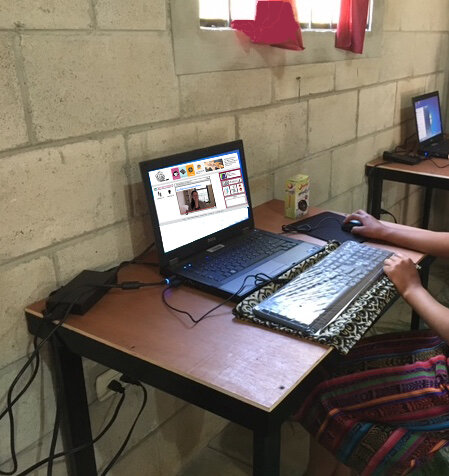Digital Media Design for Learning
My Master's thesis for the Digital Media Design for Learning Program at New York University was the design of a digital learning environment to promote attitude change by improving self-esteem of girls 12-15 years old. As part of the requirements for an after-school program focused on technology and innovation to solve social problems, girls would practice their creativity and problem solving skills in a web environment called KnittEd (Knit + Ed(ucation).
In my paper, I explained how exercising creativity and solving real life problems within an online community will allow female adolescents to increase their self esteem and become empowered.
Analysis of the background and problem, documentation of the design, implementation and evaluation processes were described, as well as future directions for the project.



Goals and Objectives
Promote critical thinking and attitude change:
To increase self-esteem
To engage girls in problem solving
To encourage participation
Objectives:
To support a national afterschool program where girls learn to solve the issues affecting their lives and their communities through innovation & technology.
Constraints
Huge amounts of information to be included in the final paper.
Team
Master’s Graduate Student in charge of this thesis - Rocío Almanza
Evaluation Team
Francine Shuchat Shaw; Fullbright / NYU
Emily Reardon; Sesame Workshop / NYU
Christopher Hoadley; US National Science Foundation
Alex Britez; DMDL, NYU Alumni
Frank Migliorelli; MIGIDEA / NYU
Maaike Bouwmeester; Taskstream / NYU

Methodology
Analysis
Understanding the Needs of Mexican Girls in Rural Areas
This phase started with a deep dive into the literature related to the problem. I also wrote about my own experience doing participatory research in rural communities in Mexico.
Once the target audience was defined, I conducted a landscape audit that consistent of the analysis of competing platforms and their shortcomings. The analysis included after school programs, apps, games, and printed materials for this target audience. To this day, I refer to that now-updated-spreadsheet often, especially when creating digital content for girls.
After that, I was able to select a website as the most effective form of delivery for this specific audience.
Design
Learner Characteristics
Before moving to NYC, I read a paper that has heavily influenced my path and passions, it was called The Miseducation of Latin American Girls; here is a video with some data from that study by the Banco Interamericano de Desarrollo (BID). The paper talks about how many vulnerable young women see teen pregnancy as a way to gain respect from their community. During this phase of my project, for several weeks, I gathered information about adolescent development and about Mexican teenage girls, especially those living in underserved and rural areas who may well be part of the group of girls that the paper mentioned above talks about. Then, I started documenting my research in a notebook, adding photos of the teens I had worked with a few months prior while doing participatory research in the Mexican mountain range, paired with statistics and relevant headlines from newspapers and specialized magazines. That research notebook eventually became my personas and guided my decisions throughout the completion of this project. In my paper, I investigated a few central themes related to the target audience:
Emotions
Creativity and problem solving,
Influence of media and stereotypes
Technology preferences
Day-to-day life.
Content Development & Theoretical Foundation
The premise for content development was:
“As part of the requirements for an after-school program (in person) that focuses on technology and innovation to solve social problems, girls will be asked to practice their creativity and problem-solving skills in a web environment called KnittEd[Knit +Ed(ucation)].”
Here is an excerpt of my thesis paper related to its theoretical foundation: “KnittEd is a multimedia instructional material that works as a trainer, the way Richard
Mayer understands it: “the goal of multimedia instruction is to provide practice in exercising skills, that is, to act as a trainer” (Mayer, 2005, p. 11).
The goal of KnittEd is to promote attitude change by improving self-esteem of Mexican young women 12-15 years old. In this environment, girls will exercise their creativity and problem solving skills in order to increase self-esteem. According to Francine Shuchat Shaw theories relevant to attitude change are in cognitive, affective, and constructivist families of theory (Shuchat Shaw, personal communication, May 2013). The design of KnittEd is based in four assumptions:
If girls exercise their problem solving skills starting by small issues and increasing the difficulty, they will be able to, in fact, transfer the learning and solve complex problems,
If girls solve problems creatively they will feel accomplished and their self-esteem will increase,
If girls work together to solve problems, and they feel part of a community then they will be more prone to keep using the material,
If girls can relate to the instructional material within their social context, then, they will learn better.”








